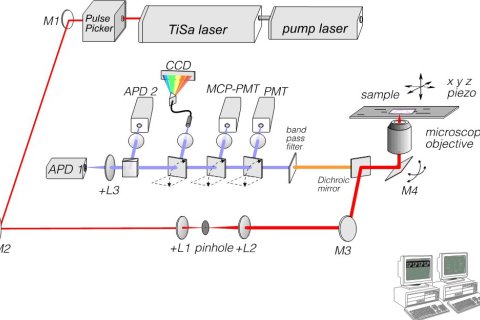Two-photon excitation

Two-Photon Excitation and Second Harmonic Imaging Microscopy
Fluorescence microscopy can be realized by making use of two-photon excitation (TPE) of fluorescent molecules. This has the distinct advantage over single-photon excitation in that the sample is illuminated in the (infra)red region of the spectrum, where the penetration depth of (biological) materials is substantially higher than in the blue or UV region. An additional advantage of two-photon excitation over conventional confocal imaging is the minimization of photobleaching. Now the excitation of the fluorescent probes is confined to a restricted volume of high electric field defined by the laser focus. In the latter technique, the fluorescent molecules are subjected to a large cone of exciting light even though only a small volume element is actually imaged. Consequently, the bleaching is proportional to the number of scans over the same microscopic volume element rather than the number of scans through the sample as a whole. We employ a solid-state pumped femtosecond Ti:Sapphire laser that covers the 700-1000 nm wavelength region. Consequently, many molecules with a single-photon absorption bands in the 350-500nm range can be excited. Moreover, the time structure can be employed in a straightforward way for the realization of fluorescence lifetime imaging.

